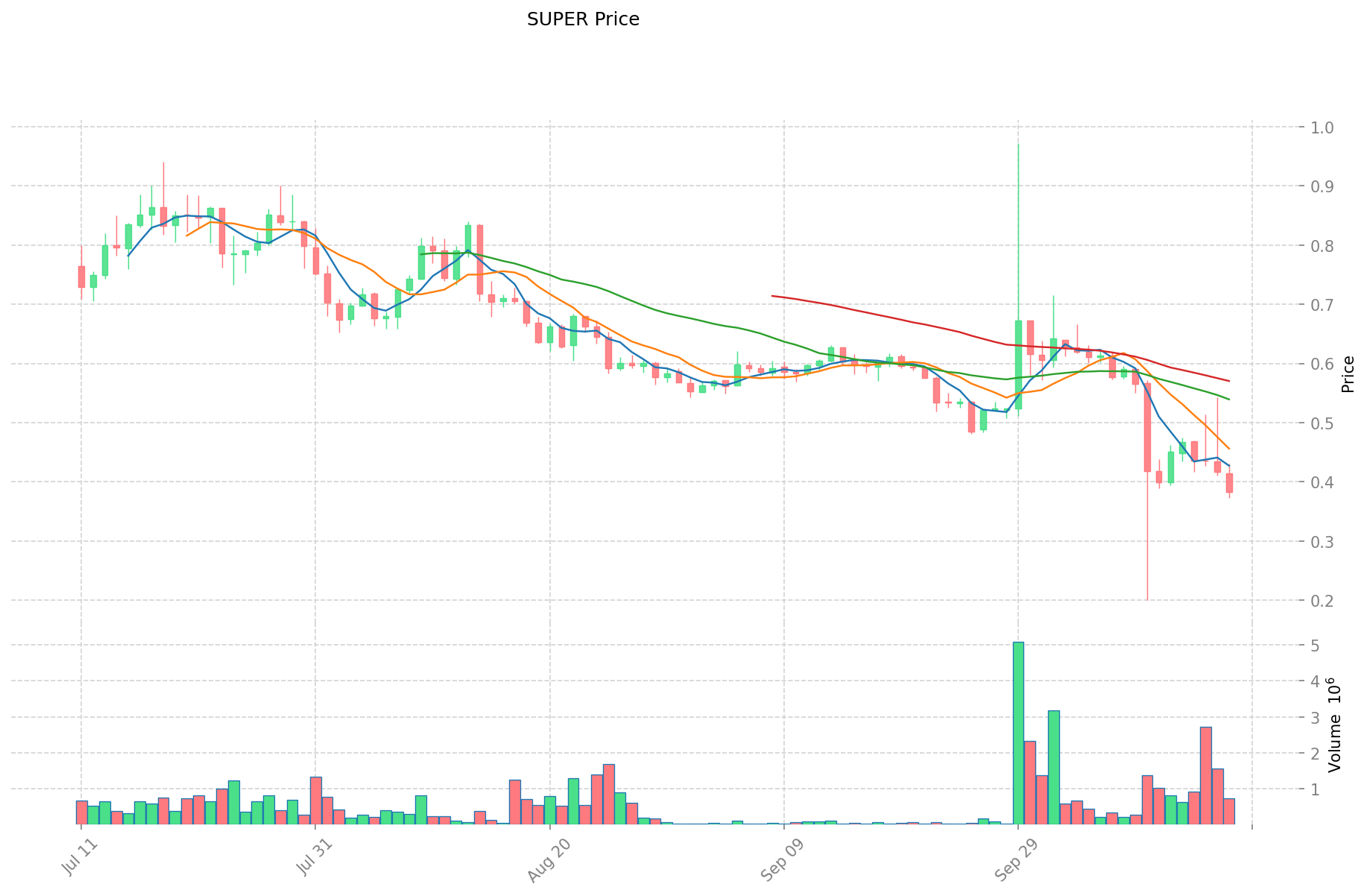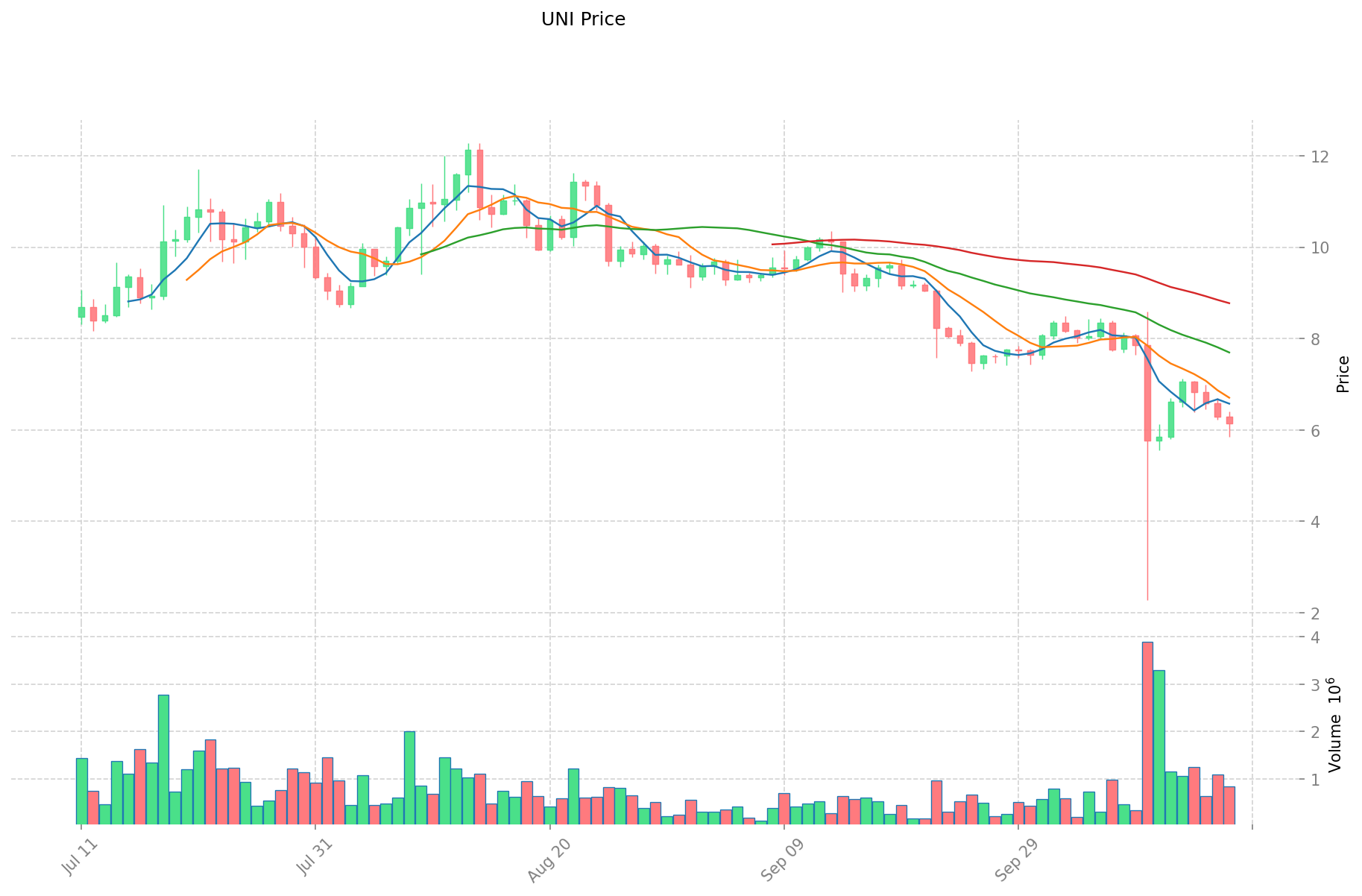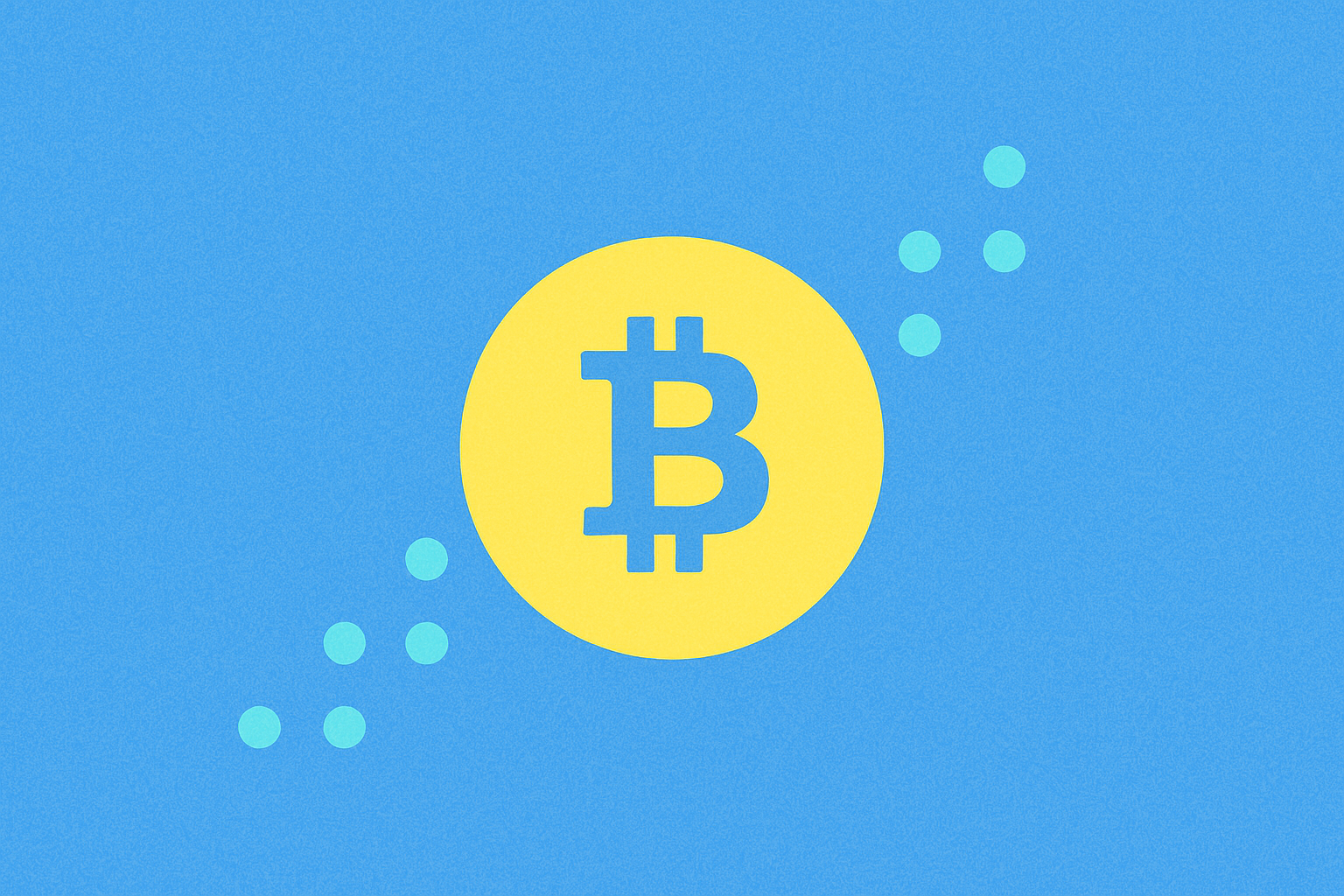SUPER vs UNI: Akıllı Telefon İşletim Sistemleri Mücadelesi


Giriş: SUPER ile UNI Arasında Yatırım Karşılaştırması
Kripto para piyasasında SUPER ve UNI karşılaştırması, yatırımcıların gündeminden hiç düşmeyen bir tartışmadır. Her iki varlık; piyasa değeri sıralaması, kullanım alanları ve fiyat performansında belirgin farklılıklar gösterirken, kripto varlıklar arasında farklı stratejik konumları temsil eder.
SuperFarm (SUPER): 2021’de piyasaya sürülmesinden bu yana, zincirler arası DeFi protokolü ve NFT altyapısı ile piyasanın dikkatini çekmiştir.
Uniswap (UNI): 2020’de tanıtılan UNI, Ethereum ekosisteminde merkeziyetsiz borsaların öncüsü kabul edilmekte, küresel işlem hacmi ve piyasa değeriyle öne çıkmaktadır.
Bu yazıda SUPER ve UNI’nin yatırım değerleri; geçmiş fiyat hareketleri, arz mekanizmaları, kurumsal benimsenme, teknolojik ekosistem ve gelecek öngörüleri çerçevesinde detaylı olarak incelenecek ve yatırımcıların en çok merak ettiği şu soruya yanıt aranacaktır:
"Şu anda hangisi daha iyi bir yatırım fırsatı sunuyor?"
I. Fiyat Geçmişi Karşılaştırması ve Aktüel Piyasa Durumu
SUPER (Coin A) ve UNI (Coin B) Tarihsel Fiyat Trendleri
-
2021: SUPER, 31 Mart 2021’de $4,72995838 ile tüm zamanların en yüksek seviyesine ulaştı.
-
2020: UNI, Eylül 2020’de yaklaşık $3 seviyesinde piyasaya giriş yaptı.
-
Karşılaştırmalı Analiz: SUPER, zirve seviyesinden $0,3804’e düşerken, UNI daha istikrarlı bir seyir izleyerek $44,92 zirvesinden $6,131 seviyesine geriledi.
Güncel Piyasa Durumu (18 Ekim 2025)
- SUPER güncel fiyatı: $0,3804
- UNI güncel fiyatı: $6,131
- 24 saatlik işlem hacmi: SUPER $238.393,52 — UNI $5.168.181,49
- Piyasa Duyarlılık Endeksi (Korku & Açgözlülük): 22 (Aşırı Korku)
Canlı fiyatları görüntülemek için tıklayın:
- SUPER güncel fiyatı için Piyasa Fiyatı
- UNI güncel fiyatı için Piyasa Fiyatı
II. Proje Özeti ve Karşılaştırma
SUPER (SuperFarm)
SuperFarm, herhangi bir token’a kodlama gerektirmeden NFT farming işlevi kazandıran zincirler arası bir DeFi protokolüdür. Kolay farm kurulumu, token-NFT dağıtımı ve özel pazar yeri yaratma imkanı ile DeFi ve NFT altyapısını dönüştürmeyi hedefler.
Temel özellikler:
- Zincirler arası uyumluluk
- Kişiselleştirilmiş farm kurulumları için görsel araçlar
- Kullanıma odaklı NFT farming
- SÜPER token ile yönetim
- staking ve getiri farming imkânları
UNI (Uniswap)
Uniswap, Ethereum üzerinde hayata geçen ilk otomatik piyasa yapıcı (AMM) protokolüdür. Merkeziyetsiz finans (DeFi) ekosisteminin temel taşlarından biri olarak kabul edilir.
Temel özellikler:
- Otomatik piyasa yapıcılığı
- Likidite sağlama
- Token takası
- UNI token ile yönetim
Karşılaştırmalı Analiz
- Piyasa Konumu: UNI, 35. sırada yer alırken SUPER 248. sıradadır.
- Piyasa Değeri: UNI ($3,68 milyar) SUPER’a ($239 milyon) göre çok daha yüksek bir piyasa değerine sahiptir.
- İşlem Hacmi: UNI ($5,17 milyon) likiditede belirgin bir üstünlük sunarken, SUPER ($238.393) düşük hacme sahiptir.
- Proje Odakları: Her ikisi de DeFi alanında faaliyet gösterse de, SUPER NFT ve farming’e odaklanırken, UNI AMM ve merkeziyetsiz borsa olarak öne çıkar.
III. Teknik Analiz
SUPER Fiyat Trendleri
- 1 Saat: -0,54%
- 24 Saat: -8,77%
- 7 Gün: -8,97%
- 30 Gün: -36,68%
- 1 Yıl: -70,55%
UNI Fiyat Trendleri
- 1 Saat: -0,42%
- 24 Saat: -2,6%
- 7 Gün: +6,17%
- 30 Gün: -35,82%
- 1 Yıl: -16,34%
Teknik Göstergeler
- SUPER, tüm dönemlerde istikrarlı bir düşüş trendi sergilemektedir.
- UNI, kısa vadede yükselişler yaşasa da uzun vadede kayıplar görülmektedir.
- Her iki token da son 30 gün ve 1 yılda belirgin değer kaybı yaşamıştır.
IV. Zincir Üzerindeki Veri Analizi
SUPER
- Dolaşımdaki Arz: 628.412.622,4169173 SUPER
- Toplam Arz: 999.998.077,4169173 SUPER
- Dolaşım Oranı: %62,84
UNI
- Dolaşımdaki Arz: 600.483.073,71 UNI
- Toplam Arz: 1.000.000.000 UNI
- Dolaşım Oranı: %60,05
Karşılaştırmalı Analiz
- Her iki token’ın dolaşım oranı benzer olup, SUPER’ın oranı (%62,84) UNI’ye (%60,05) göre biraz daha yüksektir.
- UNI maksimum arzı sabitken, SUPER’ın toplam arzı 1 milyar tokenin biraz altındadır.
V. Piyasa Duyarlılığı ve Sosyal Medya Analizi
- Piyasa duyarlılığı aşırı korku düzeyinde, Korku & Açgözlülük Endeksi 22.
- SUPER’ın 43.938, UNI’nin ise 381.286 sahibi var; UNI’nin topluluğu çok daha geniş.
- UNI 69 borsada listelenirken, SUPER 36 borsada; UNI daha likit ve erişilebilir konumda.
VI. Risk Analizi
SUPER
- Tüm dönemlerde yüksek volatilite ve belirgin fiyat düşüşleri
- Düşük piyasa değeri ve hacim, potansiyel likidite sıkıntısı
- Daha az sahip ve borsa listelenmesi
UNI
- Daha istikrarlı fiyat hareketleri; ancak uzun vadede anlamlı kayıplar mevcut
- Büyük piyasa değeri ve işlem hacmiyle likidite avantajı
- Daha yaygın benimsenme ve topluluk desteği
VII. Geleceğe Bakış
- Mevcut aşırı korku ortamı, her iki token için de alım fırsatı yaratabilir; ancak temkinli olmak gerekir.
- UNI, DeFi ekosistemindeki köklü konumuyla daha fazla istikrar ve büyüme potansiyeline sahip.
- SUPER’ın NFT odaklı yaklaşımı, NFT piyasasının yeniden canlanması halinde avantaj sunabilir.
Yasal Uyarı: Bu rapor yalnızca bilgilendirme amaçlıdır, finansal tavsiye olarak değerlendirilmemelidir. Yatırım kararı almadan önce kendi araştırmanızı yapmalısınız.


II. SUPER ile UNI’nin Yatırım Değerini Etkileyen Temel Faktörler
Arz Mekanizmaları Karşılaştırması (Tokenomics)
- SUPER: 1 milyar maksimum arz; %16 topluluk büyümesi, %5 likidite madenciliği, %36 ekip ve danışmanlara ayrılmıştır
- UNI: 1 milyar maksimum arz, 4 yılda kademeli dağıtım; %60 topluluk üyelerine, %21,51 ekibe, %17,8 yatırımcılara
- 📌 Geçmişte, UNI’nin topluluk odaklı dağıtımı daha geniş benimsenme ve piyasa döngülerinde daha istikrarlı fiyat performansı sağlamıştır.
Kurumsal Benimsenme ve Piyasa Uygulamaları
- Kurumsal yatırım: UNI, büyük borsalarda listelenerek ve endeks/fonlara girerek daha fazla kurumsal ilgi görmüştür
- Kurumsal kullanım: UNI, DeFi altyapısındaki yeriyle kurumsal ticaret ve likidite sağlama süreçlerinde daha yaygın kullanılırken, SUPER daha çok oyun ve NFT uygulamalarına odaklanır
- Regülasyon: Her iki token da belirsizliğe açık; ancak UNI’nin piyasa büyüklüğü daha fazla düzenleyici inceleme çekiyor
Teknik Gelişim ve Ekosistem Oluşturma
- SUPER teknik güncellemeler: Oyun altyapısı ve NFT pazar yeri entegrasyonu
- UNI teknik geliştirmeler: AMM protokolleri, yönetim mekanizmaları, çoklu blockchain dağıtımı
- Ekosistem: UNI, DeFi’de milyarlarca TVL ile baskın; SUPER ise oyun, metaverse ve NFT’ye odaklanıyor
Makroekonomik Faktörler ve Piyasa Döngüleri
- Enflasyon dönemlerinde performans: UNI, yüksek piyasa değeri ve likiditesiyle daha dirençli
- Para politikası: Her iki token faiz değişikliklerine hassas; UNI daha düşük volatilite gösterir
- Jeopolitik: UNI’nin küresel yaygınlığı, bölgesel regülasyonlara karşı daha fazla coğrafi çeşitlilik sunar
III. 2025-2030 Fiyat Tahmini: SUPER vs UNI
Kısa Vadeli Tahmin (2025)
- SUPER: Temkinli $0,33-$0,38 | İyimser $0,38-$0,46
- UNI: Temkinli $5,84-$6,15 | İyimser $6,15-$6,45
Orta Vadeli Tahmin (2027)
- SUPER, büyüme evresine girebilir; tahmini fiyat aralığı $0,34-$0,65
- UNI, istikrarlı büyüme evresine geçebilir; tahmini fiyat aralığı $4,58-$7,48
- Başlıca etkenler: Kurumsal sermaye girişi, ETF, ekosistem gelişimi
Uzun Vadeli Tahmin (2030)
- SUPER: Temel senaryo $0,54-$0,72 | İyimser senaryo $0,72-$0,81
- UNI: Temel senaryo $5,32-$9,02 | İyimser senaryo $9,02-$9,38
Yasal Uyarı: Bu analiz bilgilendirme amaçlıdır ve yatırım tavsiyesi değildir. Kripto para piyasası yüksek volatiliteye ve öngörülemezliğe sahiptir. Yatırım kararınız öncesinde daima kendi araştırmanızı yapın.
SUPER:
| Yıl | Tahmini En Yüksek Fiyat | Tahmini Ortalama Fiyat | Tahmini En Düşük Fiyat | Fiyat Değişimi (%) |
|---|---|---|---|---|
| 2025 | 0,462462 | 0,3822 | 0,328692 | 0 |
| 2026 | 0,58704009 | 0,422331 | 0,32097156 | 11 |
| 2027 | 0,6459974976 | 0,504685545 | 0,33813931515 | 32 |
| 2028 | 0,834245205885 | 0,5753415213 | 0,396985649697 | 51 |
| 2029 | 0,7329850981362 | 0,7047933635925 | 0,486307420878825 | 85 |
| 2030 | 0,805155938568072 | 0,71888923086435 | 0,539166923148262 | 88 |
UNI:
| Yıl | Tahmini En Yüksek Fiyat | Tahmini Ortalama Fiyat | Tahmini En Düşük Fiyat | Fiyat Değişimi (%) |
|---|---|---|---|---|
| 2025 | 6,4533 | 6,146 | 5,8387 | 0 |
| 2026 | 7,181601 | 6,29965 | 5,8586745 | 2 |
| 2027 | 7,482094305 | 6,7406255 | 4,58362534 | 9 |
| 2028 | 9,6714494674 | 7,1113599025 | 6,5424511103 | 15 |
| 2029 | 9,6501153876925 | 8,39140468495 | 6,1257254200135 | 36 |
| 2030 | 9,3815904377741 | 9,02076003632125 | 5,322248421429537 | 47 |
IV. Yatırım Stratejisi Karşılaştırması: SUPER ile UNI
Uzun Vadeli ve Kısa Vadeli Yatırım Stratejileri
- SUPER: NFT ve oyun odaklı ekosistemlere yatırım yapmak isteyen, metaverse büyümesini hedefleyenler için uygundur
- UNI: İstikrar, DeFi maruziyeti ve piyasa hakimiyeti arayan yatırımcılar için idealdir
Risk Yönetimi ve Varlık Dağılımı
- Temkinli yatırımcılar: SUPER %10, UNI %90
- Agresif yatırımcılar: SUPER %30, UNI %70
- Koruma araçları: Stablecoin tahsisi, opsiyonlar, karma token portföyleri
V. Potansiyel Risk Karşılaştırması
Piyasa Riski
- SUPER: Daha yüksek volatilite, düşük likidite ve hızlı fiyat dalgalanmasına açık
- UNI: DeFi pazar trendlerine ve diğer DEX rekabetine karşı hassas
Teknik Risk
- SUPER: Ölçeklenebilirlik sorunları, yoğun talepte ağ istikrarı
- UNI: Akıllı kontrat açıkları, likidite havuzunda dengesizlik riski
Regülasyon Riski
- Küresel regülasyonlar, UNI’nin geniş piyasa varlığı ve DeFi’deki yaygın kullanımı nedeniyle daha fazla etki yaratabilir
VI. Sonuç: Hangisi Daha İyi Alım Fırsatı?
📌 Yatırım Değeri Özeti:
- SUPER avantajları: NFT ve oyun odaklı niş yaklaşım, gelişmekte olan pazarlarda hızlı büyüme potansiyeli
- UNI avantajları: Yerleşik piyasa konumu, yüksek likidite, kapsamlı ekosistem entegrasyonu
✅ Yatırım Tavsiyesi:
- Yeni yatırımcılar: İstikrar ve piyasa hakimiyeti için UNI’ye ağırlık verin
- Deneyimli yatırımcılar: Hem SUPER hem UNI’yi içeren dengeli portföy, istikrar için UNI ağırlıklı
- Kurumsal yatırımcılar: Likidite ve derinlik için UNI’de yoğunlaşın, çeşitlilik için az miktar SUPER ekleyin
⚠️ Risk Uyarısı: Kripto para piyasası yüksek volatiliteye sahip olup, bu içerik yatırım tavsiyesi niteliği taşımamaktadır. None
VII. Sıkça Sorulan Sorular
S1: SUPER ile UNI arasındaki temel farklar nelerdir? C: SUPER, NFT farming ve oyun altyapısına odaklanırken, UNI merkeziyetsiz borsa protokolüdür. UNI, daha yüksek piyasa değeri, likidite ve DeFi ekosisteminde geniş çaplı benimsenmeye sahiptir.
S2: Hangi token daha istikrarlı fiyat performansı sergilemiştir? C: UNI, SUPER’a göre daha istikrarlı fiyat performansı göstermiştir. UNI piyasa düşüşlerinde daha dirençli kalırken, SUPER yüksek volatilite yaşamıştır.
S3: SUPER ve UNI tokenomics’i nasıl karşılaştırılır? C: Her ikisinin de maksimum arzı 1 milyar adettir. UNI, %60’ı topluluk üyelerine ayrılmış topluluk odaklı dağıtıma sahipken, SUPER %16 topluluk büyümesi ve %36 ekip/danışmanlara pay ayırmaktadır.
S4: Hangisi uzun vadeli yatırımda daha güvenli kabul edilir? C: UNI, köklü piyasa konumu, yüksek likidite ve DeFi ekosistemindeki entegrasyonu nedeniyle genellikle daha güvenli uzun vadeli yatırım olarak görülmektedir.
S5: Her bir token için büyüme katalizörleri nelerdir? C: SUPER’ın büyümesi NFT ve oyun pazarının genişlemesine bağlı; UNI ise DeFi’nin büyümesi ve AMM protokol geliştirmeleriyle ivme kazanır.
S6: Kurumsal benimsenme açısından SUPER ile UNI nasıl ayrışır? C: UNI, büyük borsalarda listelenmesi ve endeks/fonlara dahil edilmesiyle daha fazla kurumsal ilgi görür. SUPER, daha düşük piyasa varlığı nedeniyle kurumsal alanda daha az benimsenmiştir.
S7: SUPER ve UNI yatırımlarında başlıca riskler nelerdir? C: SUPER, yüksek volatilite ve likidite riskiyle karşı karşıya; UNI ise DeFi pazar trendleri ve regülasyon denetimine daha fazla maruz kalıyor. Her iki token da akıllı kontrat açıkları ve ağ ölçeklenebilirliği gibi teknik risklere tabidir.

2025 DEGO Fiyat Tahmini: Uzun Vadeli Büyüme Potansiyeli Açısından Temel Faktörler ve Piyasa Trendlerinin Analizi

Rarible (RARI) Yatırım İçin Uygun mu?: Rekabetçi Piyasada NFT Platformunun Büyüme Potansiyeli Değerlendirmesi

ARTEM Coin (ARTEM) iyi bir yatırım mı?: Bu yeni ortaya çıkan kripto paranın potansiyeli ve riskleri üzerine analiz

ShoeFy (SHOE) iyi bir yatırım mı?: Bu yeni kripto tokeninin olası risklerini ve kazançlarını analiz ediyoruz

ThetaDrop (TDROP) iyi bir yatırım mı?: NFT odaklı bu kripto paranın potansiyeli ve riskleri üzerine analiz

2025 BMT Fiyat Tahmini: Piyasa Trendlerinin ve Olası Büyüme Faktörlerinin Analizi

Dropee Günlük Kombinasyonu 12 Aralık 2025

Tomarket Günlük Kombinasyonu 12 Aralık 2025

SEI Airdrop Ödülleri’ne Katılım ve Talep Etme Kılavuzu

Kripto para birimlerinde algoritmik alım satım için etkili stratejiler

Stock-to-Flow Model ile Bitcoin'in Değerlemesini Anlamak





